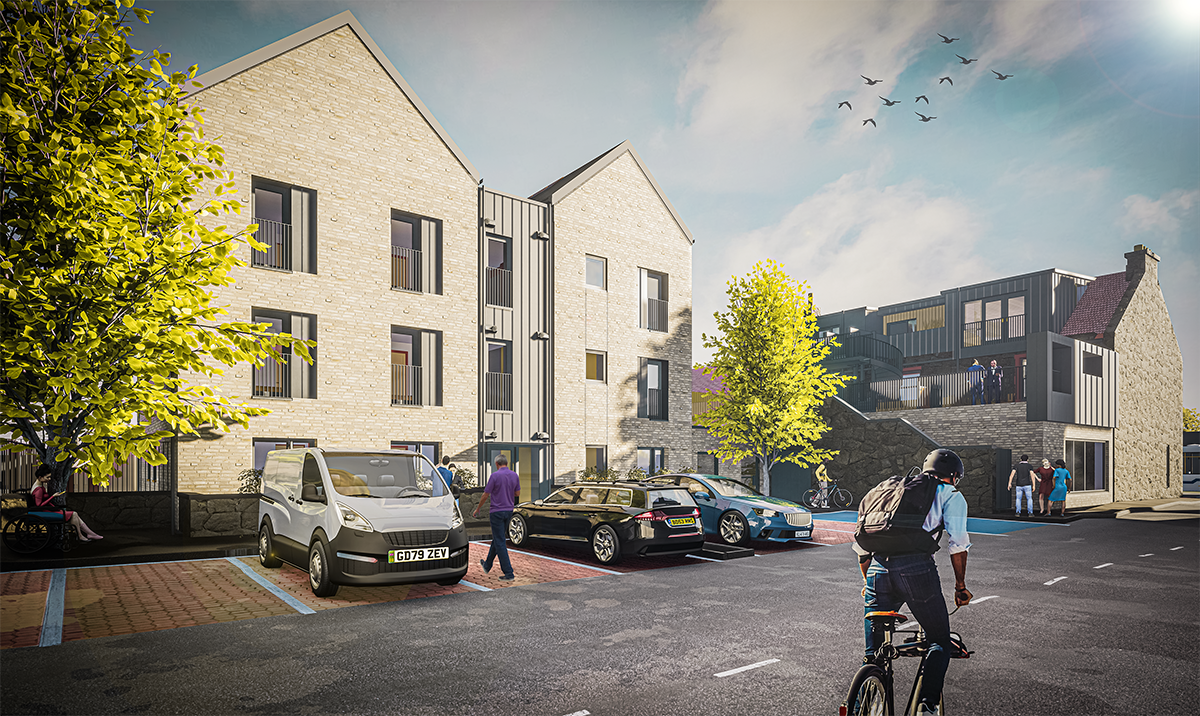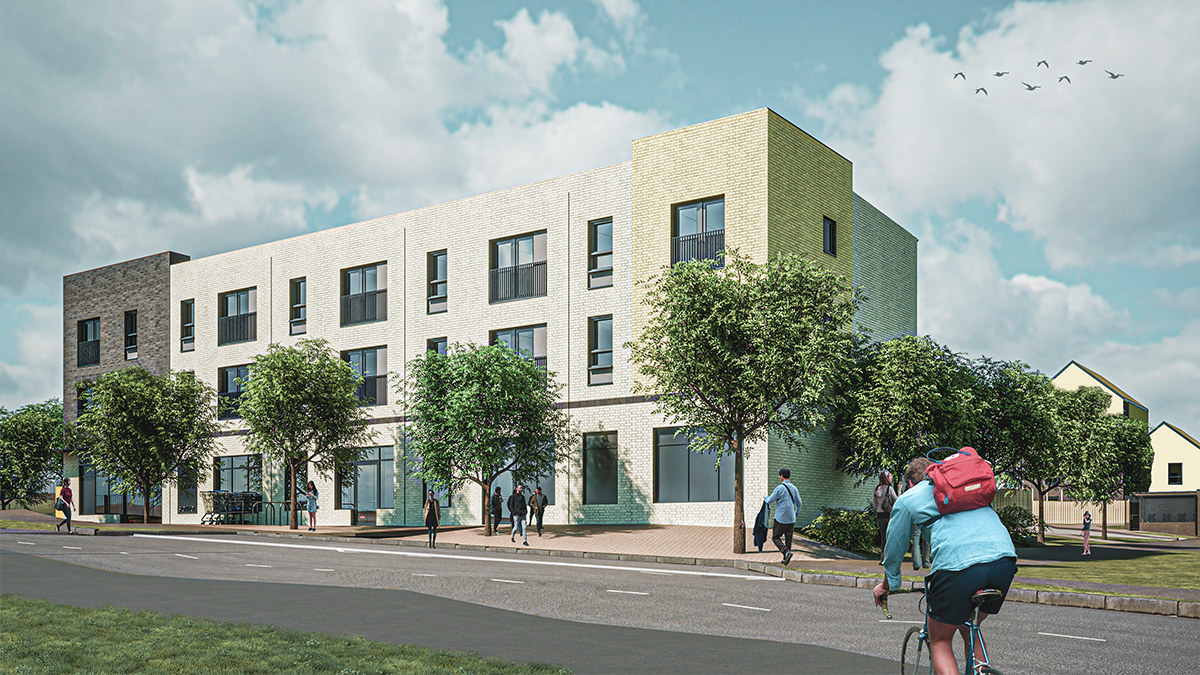
A passive house construction specialist says the time has come for the private sector to embrace the ultra-high energy efficient standard, to improve buildings across a wide range of sectors.
Jarek Gasiorek, senior architect at Smith Scott Mullan Associates, told Project Scotland that everything from cinemas to swimming complexes could benefit from utilising the concept, which significantly improves the energy efficiency of buildings by minimising heat loss.
Currently, the passive house (commonly given the German Passivhaus spelling) standard is most commonly associated with residential projects but is beginning to gain traction in other sectors, including education buildings, and can also be applied to retrofit existing structures.
Jarek said, “The passive house standard was created in Germany about 30 years ago. It means that the house saves, absorbs or reuses energy. That is achieved by an extremely well performing envelope, which includes very low U-values, extreme airtightness and high quality triple glazed windows, supported by heat recovery ventilation.”
Jarek explained that potential problems that are common in traditional buildings can be designed out, with the effect of substantially reducing energy consumption.
“Air tightness further reduces consumption, which is also associated with building quality,” he added. “Through the QA process – which is third party certified – the building delivery has to be very well controlled. That includes specification, design, detailing, and also the delivery of the site.
“Another big strength of passive house is the lack of performance gap, which is the difference between what has been designed and what has been constructed in terms of the performance of the building. It’s a design and quality control regime which leads us to very low energy and heating demands.”

Smith Scott Mullan Associates is currently involved in four live passive house residential projects in Scotland totalling around 130 units, with a further 250 units at conceptual stage in the pipeline, of different house types – from flats to bungalows – including a ‘very complex combination’ of housing and retail in one building. The projects include the first two passive house projects that Midlothian Council have embarked upon in Dalkeith and Bonnyrigg.
The business also has a primary school and nursery project, requiring a whole range of different typologies and mixes on different types of sites.
Due to the innovation and quality involved in building to passive house standards, cost implications are a natural concern for many. However, Jarek revealed the situation is more nuanced than simply saying that passive house buildings are more expensive to build.
“Passive house used to be traditionally viewed as one-off buildings for private clients,” he said. “Now it seems that passive house is adopted as a standard for many. It is still quite pricey because of materials and the training involved. It is quite complicated at the beginning.
“It’s quite clear how quickly the industry learns and, as a result, the costs will drop down. Depending on who we speak to, the cost of the first project might be 15-20% more expensive than the standard. And then in the following projects that will reduce significantly. Ultimately it was reported down south that lots of projects are delivered for the same budget as standard houses. What you need is an experienced team. This is one of the reasons why we jumped on this boat as quickly as possible.”
Jarek highlighted the Goldsmith Street by Mikhail Riches Architects passive house project in Norwich, which won the RIBA Stirling Prize in 2019, as proof that passive house is not only deliverable in high density arrangement but is also suitable for social housing as it deals with fuel poverty and reduces maintenance costs.
He agrees that the construction industry’s willingness to embrace new technologies and processes is improving, though he admits he wishes it would be ‘much quicker’ due to the extent of the climate emergency.
“We don’t have much time,” he added. “The building industry is responsible for around 40% of UK carbon emissions. By decarbonising this industry only, we almost meet our Paris Agreement, which is quite a powerful message. The future is in our hands, but changes are happening relatively slowly. We have to deal with existing housing stock and retrofit preferably also to passive house standard. We have to change the products we are using. We have to replace concrete perhaps to some extent. We have to use more timber. There is quite a lot of hope in locally Scottish-grown CLT construction methods.”
Jarek said that while there is plenty of work being carried out within the construction industry on innovation and progressive thinking, there are some moments when there is a feeling that some prefer to stick to ‘business as usual’ because it seems more efficient. This, Jarek argues, is a ‘false economy’ because in a few years’ time, working to passive house or similar solutions will be the only way.
As well as reducing the performance gap in buildings, Jarek said there are a whole range of associated benefits.
“The passive house standard was born from the idea of achieving a better thermal environment – houses where there is no draft, no windows radiating cold, and where the quality of the air is good,” he explained. “The houses are simply healthier to live in.
“And because of the high quality of the construction, they stay this way. We always will have the healthiest possible indoor air quality. That is a really important aspect of passive house, because it deals with this softer aspect of health-related (factors). It’s associated with wellbeing and mental health as well. Also in the office environment, you work more efficiently. Those health benefits are really, really important.”
Jarek hopes that Scotland’s hosting of the COP26 climate summit in November will act as a driver of change. He believes that Scotland declaring a ‘climate emergency’ had a ‘substantial impact’ on state-founded clients. He says it is now time for the private sector to follow suit.
“The knowledge about how to minimise the impact of the industry already exists,” he said. “What is required is major upskilling and improvement of climate literacy. This is true for consultants, contractors, and investors. It is ultimately up to clients to demand the implementation.”








